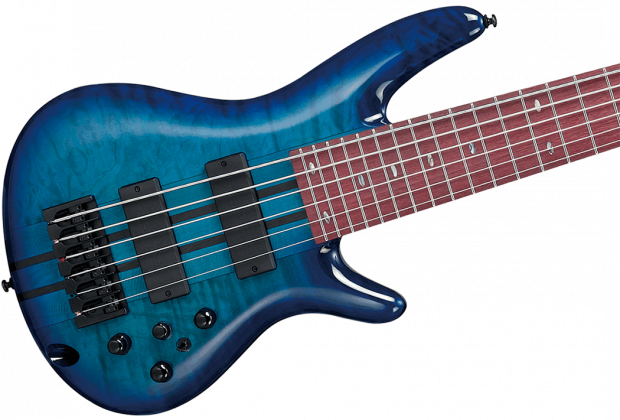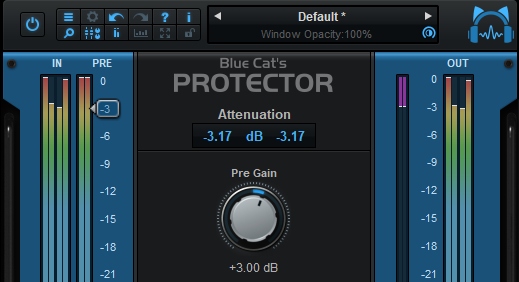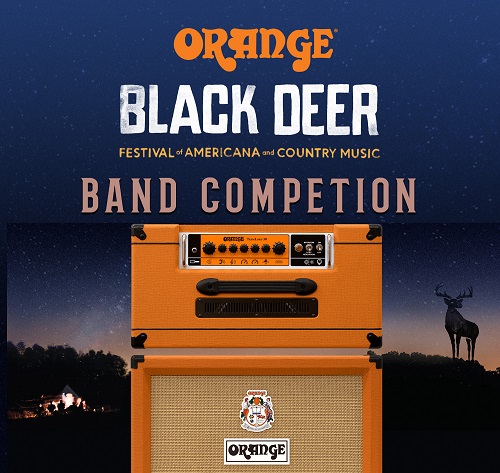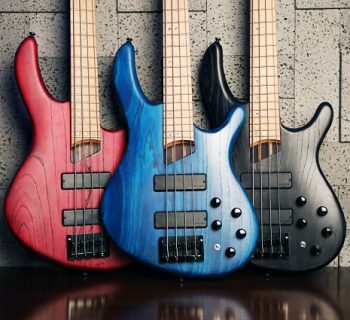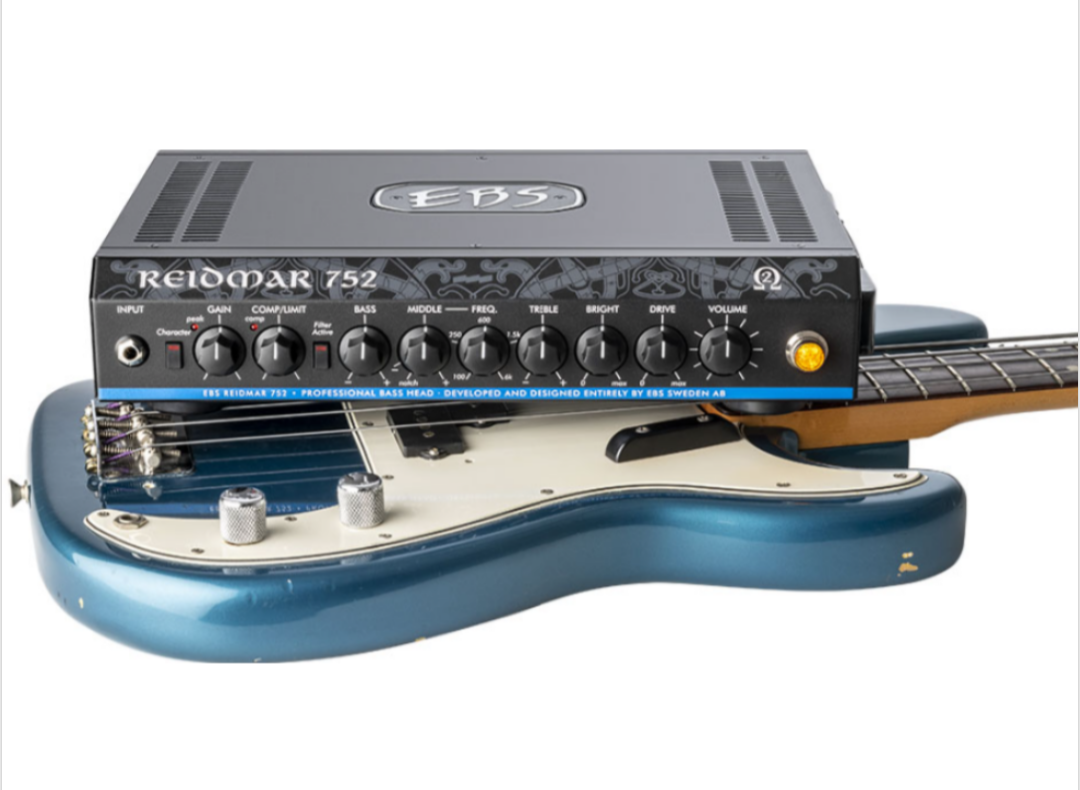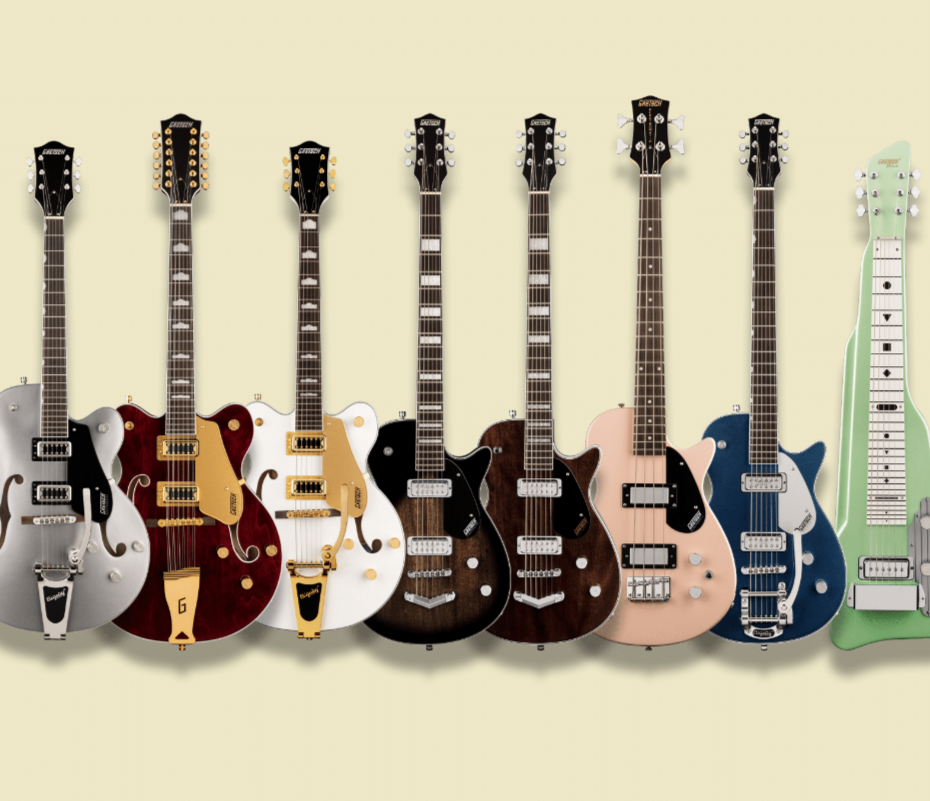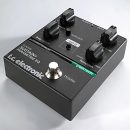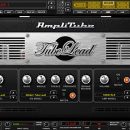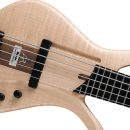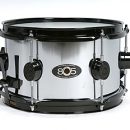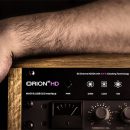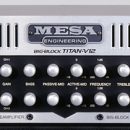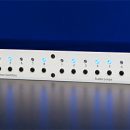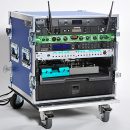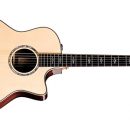Having a signature series musical instrument is a serious commitment. When a musician has established their career as an artist, sideman, educator and is more than proficient in multiple playing styles and genres, it is a big undertaking to embody your life’s work into an instrument that bears your name.
 Adam Nitti has worked with a long list of artists from Kenny Loggins and Carrie Underwood to Dave Weckl and Mike Stern, and has established his roots as an A-Lister in Nashville, TN. As an in-demand sideman, Nitti has to be chameleon of sorts in order to provide the right bass sound for every project that comes his way. As an artist and soloist, having an instrument that allows you to express your vibe and a tool that provides the comfort and reliability to do so is critical. And thus, Adam Nitti has bestowed his name on the Ibanez ANB306, a superb six-string bass suitable to just about any gig or recording session you want to throw at it.
Adam Nitti has worked with a long list of artists from Kenny Loggins and Carrie Underwood to Dave Weckl and Mike Stern, and has established his roots as an A-Lister in Nashville, TN. As an in-demand sideman, Nitti has to be chameleon of sorts in order to provide the right bass sound for every project that comes his way. As an artist and soloist, having an instrument that allows you to express your vibe and a tool that provides the comfort and reliability to do so is critical. And thus, Adam Nitti has bestowed his name on the Ibanez ANB306, a superb six-string bass suitable to just about any gig or recording session you want to throw at it.
Features
Right out of the case, the ANB306 is quite impressive! It totally screams “high-end” but with a certain familiarity since it is based on the tried-and-true design of the Ibanez Soundgear-series basses. It comes only in a six-string version, strung standard from low B to high C. (Note: Adam Nitti also has a five-string signature model called the ANB205 but it is not simply a five-string “version” of the ANB306.)
The ANB306 bass has a 24-fret, 34” scale, neck-through design made with five pieces of alternating maple and purpleheart woods, with truss rod adjustment at the headstock. The fingerboard is also purpleheart, with oval green abalone fret markers and a matching purpleheart truss rod access cover that covers the dual truss rod channel. The headstock is sleek and compact with just enough room for six black Gotoh tuning machines arranged in a 3x3 fashion—and the Ibanez logo of course.
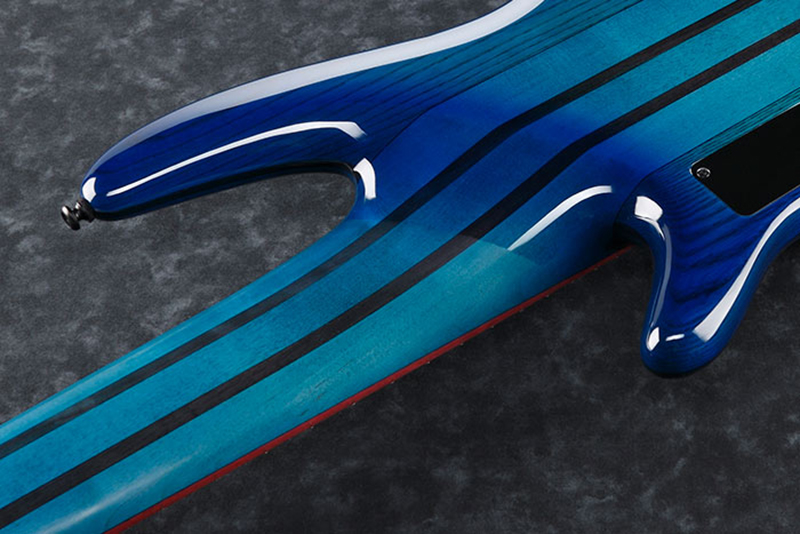
A big part of this instrument’s visual persona is in the ash body wings with a quilted maple top. When we look at the edge of the bass through the more opaque part of the burst finish, we could see that the maple top is not just a veneer. The overall body thickness is approximately 1.5” thick, with about ¾” ash, about ½” thick quilted maple, and although not listed in the specs, what appears to be roughly ¼” purpleheart in between. Using an extremely thin veneer of figured wood on the surface is common on many import basses for the visual aesthetic, but not on this instrument!
The entire bass is finished exclusively in a beautiful, deep blue burst that really brings out the figure. While the body is glossy, the back of the neck has a satin finish. According to Adam, one of the focuses on the design of this bass is accessibility of the higher frets all the way up to the final 24th fret. The way they accomplished this without straying too far from the Soundgear formula was to move the neck joint further toward the headstock of the body so the 24th fret is right at the edge of the bottom cutaway. He points out that the bridge was then moved up to maintain the 34” scale, which you might notice leaves a bit more space between the bridge and the bottom edge of the body, slightly different than the typical Soundgear design.
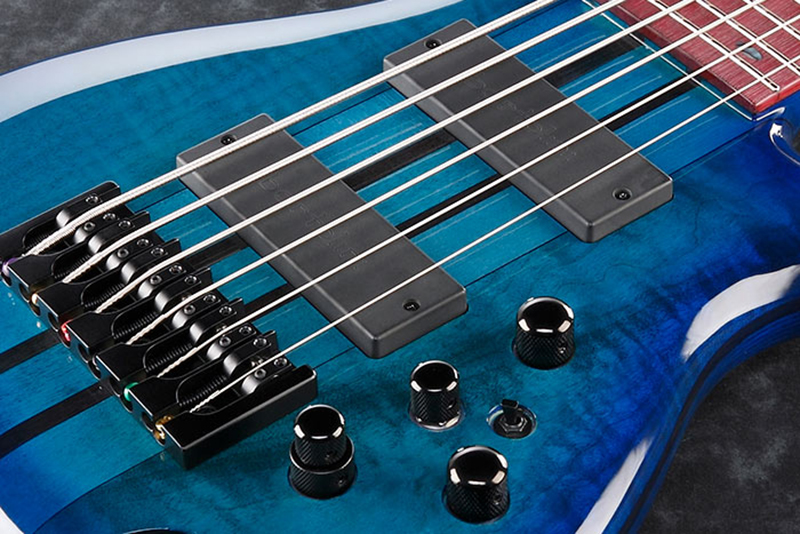
The bridge is an 18mm, black, Hipshot A-Style bridge that is top loading, and it offers you the option to adjust the lateral position of the saddles to fine tune the string spacing. 18mm is also a wider spacing than the standard six-string Soundgear design. The width at the nut is 55mm wide, 1mm wider than the standard design.
Passive Bartolini xxM56C-B neck and xxM56C-T bridge are the pickups of choice. They are each quad-parallel humbucking, soap-bar pickups which provide the “classic” Bartolini sound. The preamp is a Bartolini NTMB+F ANB Custom with a 3-band EQ. This consists of a bass and treble boost/cut on a single concentric pot and a mid boost/cut on a single pot with a separate three-way toggle for switchable mid-range center frequencies of 250/500/800Hz. A separate volume and balance pot complete the intuitive system. All of the knobs are recessed for a clean look. The electronics run on two 9V batteries which are in a recessed compartment accessible behind two screws on the back of the instrument. The output is a single ¼” jack, recessed at an angle from the front of the instrument.
Usability
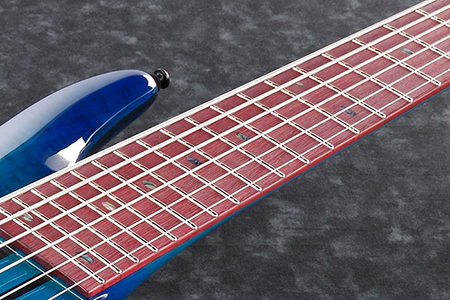 For all of you who play or have played Ibanez Soundgear Series basses, one of the first things that come to mind is how comfortable and “fast” the necks are. The ANB306 does not disappoint in that regard. The neck is fairly thin and comfortable all the way into the upper register but with absolutely no lack of substance. The neck was extremely solid and responsive, and with minimal adjustment we were able to set the action just right, where the strings were surprisingly low without any noticeable fret buzz.
For all of you who play or have played Ibanez Soundgear Series basses, one of the first things that come to mind is how comfortable and “fast” the necks are. The ANB306 does not disappoint in that regard. The neck is fairly thin and comfortable all the way into the upper register but with absolutely no lack of substance. The neck was extremely solid and responsive, and with minimal adjustment we were able to set the action just right, where the strings were surprisingly low without any noticeable fret buzz.
Removing the truss rod cover was simple with the screws strategically placed between the strings and the dual truss rods are easily accessible and adjustable with the strings on. The fretwork was impeccable and sighting down the neck gave a clear picture of precision. When we lightly plucked a string, the bass responded beautifully. When we dug into a string, the bass responded with attitude. When we slapped and popped the strings, the bass recoiled right back. Through our time with this instrument in New York, we went through some severe weather and temperature changes and the bass required no adjustment at all. It was even used on a gig that required tuning down a whole step and no neck adjustment was needed. One of the biggest inconveniences for any gigging musician is showing up to a venue and having to do a last-minute adjustment. Hey… it is part of the game, but this bass seemed to minimize—if not eliminate—that factor.
From a seated position, without utilizing a guitar strap, there is a reasonable amount of neck dive, but not extreme. I am sure the extended placement of the neck to allow the 24th fret access contributed to this factor. With a strap however, the balance works perfectly. Even with the thinness of the body, this instrument is heavier than expected. Ours weighed in at 11.2lbs/5.08kg. But weight is a matter of preference with every bass player. Some prefer light over heavy for a more back-friendly experience. For some, heavy translates to better sustain. Between the neck-through construction and the weight of this bass, the sustain and responsiveness are fantastic, but start doing your sit-ups and crunches to get that back in shape!
Overall, the ergonomics work perfectly. The wider 18mm string spacing at the bridge gives plenty of room for detailed thumb work and space to really dig in. From our experience, this was even more comfortable than the standard Soundgear string spacing. The slightly wider spacing at the nut also worked extremely well. There is an evenness throughout the range of the instrument where even if you are pedaling quarter notes on the B string or reaching for those high notes on the C string, you can accomplish it all effortlessly with an equal responsiveness throughout.
 The control layout is very familiar and easily manipulated, with smooth function. It was effortless to dial in the right sound. The Volume knob has a smooth resistance to it, and the Balance, Bass, Mid, and Treble controls each have clearly defined center detents. When plugged in, there were no sound jumps, unexpected signal dips, pops, clicks, etc. on this bass. The slightly recessed knobs are subtle, but that slight detail makes them seem less “in the way.” It also makes a difference taking the bass in and out of the gig bag. You know… those wear marks on the surface of the control knobs from many gigs in and out of the case. Even though there is no “quick access” battery compartment, the cover plate was easily removed with two screws (and metal couplings/inserts in the body for years of repetitive use). The battery cover also has a nice touch where it is slightly raised and notched on the side so you can easily get your fingernail in to pop it out.
The control layout is very familiar and easily manipulated, with smooth function. It was effortless to dial in the right sound. The Volume knob has a smooth resistance to it, and the Balance, Bass, Mid, and Treble controls each have clearly defined center detents. When plugged in, there were no sound jumps, unexpected signal dips, pops, clicks, etc. on this bass. The slightly recessed knobs are subtle, but that slight detail makes them seem less “in the way.” It also makes a difference taking the bass in and out of the gig bag. You know… those wear marks on the surface of the control knobs from many gigs in and out of the case. Even though there is no “quick access” battery compartment, the cover plate was easily removed with two screws (and metal couplings/inserts in the body for years of repetitive use). The battery cover also has a nice touch where it is slightly raised and notched on the side so you can easily get your fingernail in to pop it out.
Sound
As a well-established session player’s critical tool, you would expect that this bass can be dialed in effortlessly to achieve the right sound for the right application. The ANB306 is everything you would hope for on that front. With the pickup balance control dead center and all EQ controls flat, this bass delivers a sound rich in detail with plenty of low end and high-end definition. The sound is very responsive and reactive to the touch. A soft touch with the pads of your fingers gives you a full yet defined sound that can easily sit in a ballad, accenting bass line, or pulsing feel. With the same setting, dig into the strings a bit harder and you get more grit from the attack of the string while still maintaining that low end.
Don’t touch those dials and move into slapping position and you get plenty of punch and attitude. All of this without even reaching for the EQ. Pan the balance knob to toward the neck pickup and you get the classic P-Bass vibe but with the nuance of the humbucker. Pan the balance toward the bridge and you get that bridge pickup focus and definition. At first, we wondered why there wouldn’t be an active/passive push/pull switch on the volume. But after putting this bass through its paces, the sound of the bass without any boost or cut of the EQ is virtually passive, and it sounds great just the way it is. (Although, the bass is not completely idiot-proof. You can’t neglect to change your batteries.)
We found that the beauty of the sound of this bass is that we barely needed to touch the active EQ to get a tone that sounded and felt right. From a recording session standpoint, our rule of thumb is to minimize the use of the recorded on-board EQ. Use only minor adjustments so you can get into the groove of the song and leave any major EQ adjustments to the engineer in the mix.
The responsiveness and the evenness of tone and sustain throughout the range of the ANB306 is the magic of this instrument, combined with the ability of the Bartolini pickups and pre-amp to capture it. Whether in studio or live performance, this instrument has it covered.
Documentation and Product Support
There is a reasonable description on the website regarding specs as well as a control layout with frequency response graphs, and Ibanez provides plenty of online information regarding care and maintenance of their basses.
One-year warranty for parts and labor from the date of purchase.
Price
The Ibanez Adam Nitti Premium Signature ANB306 6-String Bass Guitar (MSRP $3,066) sells for approximately $2,300 and includes a high-quality gig bag. This instrument is part of the Premium line made in Indonesia. You might think a price upwards of $2K is a lot for an Ibanez, but the build-quality and design of this instrument is impeccable (and we’ve played many other Ibanez instruments coming out of the Indonesia factory with nothing but great results). Considering the build quality and highly-spec’ed hardware, this signature bass presents a solid value in a pro instrument.
Contact Information
Ibanez
www.ibanez.com

